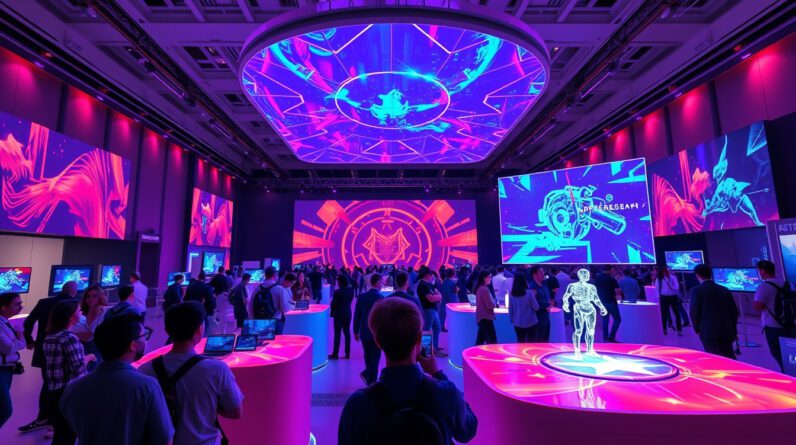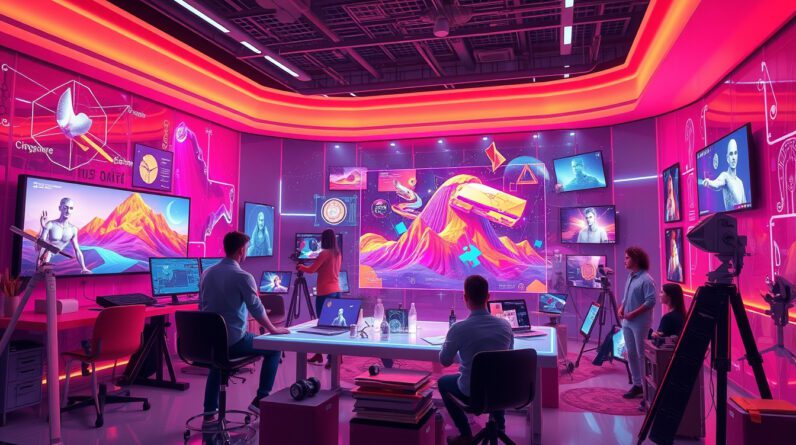
The world of data centers is on the brink of transformation with the introduction of the NVIDIA RTX PRO 6000 Blackwell Server Edition, a cutting-edge GPU that merges enterprise AI capabilities with exceptional visual computing performance. As businesses increasingly rely on robust computing solutions to handle demanding workloads, the RTX PRO 6000 promises to deliver unparalleled efficiency and speed across a multitude of industries. Unveiled at the NVIDIA GTC event, this GPU is poised to redefine the operational capabilities of data centers, propelling advancements in areas such as artificial intelligence, data analytics, and engineering simulations. In this article, we will delve into the impressive performance enhancements of the RTX PRO 6000 and explore its vast applications across various sectors.

Takeaways
- The RTX PRO 6000 Blackwell Server Edition offers up to 5x higher throughput for large language model inference, significantly enhancing AI capabilities.
- Designed for diverse industries, it facilitates accelerated workloads in generative AI, data analytics, and real-time rendering.
- With its advanced architecture and 96GB of GDDR7 memory, the GPU enables secure and efficient multi-instance operations for AI and graphics tasks.
Performance Enhancements of the RTX PRO 6000 Blackwell Server Edition
The NVIDIA RTX PRO 6000 Blackwell Server Edition marks a revolutionary advancement in the realm of data center graphics processing units (GPUs), designed to meet the soaring demands of modern enterprise applications. Unveiled during the NVIDIA GTC, this GPU shines in its ability to blend enterprise AI with high-end visual computing capabilities, promising substantial performance boosts over its predecessor, the L40S GPU. Users can expect an unprecedented up to 5x higher throughput for large language model (LLM) inference, a near 7x acceleration in genomics sequencing, and a remarkable
3.3x speedup in text-to-video generation, adding incredible value to diverse sectors like architecture, automotive, financial services, and media. At the heart of the RTX PRO 6000 lies 96GB of GDDR7 memory which makes possible multi-instance GPU operations, thereby allowing for simultaneous AI tasks and graphics rendering. This seamless handling of intricate workloads is complemented by cutting-edge architecture that incorporates fifth-generation Tensor Cores and fourth-generation RT Cores, transforming approaches to AI applications and real-time rendering. Collaborations with innovators such as Black Forest Labs and OTOY further underline the GPU’s potential in enhancing content creation processes, while partnerships with semiconductor manufacturers like KLA promise transformative effects in wafer manufacturing methods. Companies like Oxford Nanopore Technologies have already begun to see performance enhancements in their AI applications post-integration of the RTX PRO 6000, reflecting its robust capabilities. Cloud service giants like AWS, Google Cloud, and Microsoft Azure will be incredibly pivotal in distributing the GPU starting this May, paving the way for a new era of AI and graphics-intensive applications.
Applications of RTX PRO 6000 in Various Industries
The versatility of the NVIDIA RTX PRO 6000 Blackwell Server Edition extends beyond mere numbers; it embodies a shift in how industries can leverage advanced computing technologies. In architecture, for instance, design firms can utilize its capabilities to render complex models in real-time, ensuring that architects can visualize every detail during the creative process. The automotive industry is also set to benefit significantly, particularly in the realms of autonomous driving simulations and vehicle design optimizations. Here, the GPU’s enhanced processing power allows for more accurate simulations and faster iterations in design, which can significantly reduce time-to-market for new vehicles. Furthermore, in the financial services sector, the GPU’s ability to handle immense datasets and perform rapid analytics translates into quicker decision-making processes and improved risk assessments. Media companies can harness its power for high-quality video production, editing, and post-processing, dramatically cutting down the time required for visual effects and rendering tasks. This multifaceted approach not only boosts productivity across sectors but also opens up new avenues for innovation in product development and service delivery.




